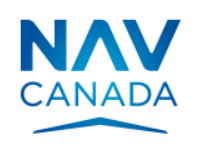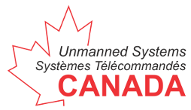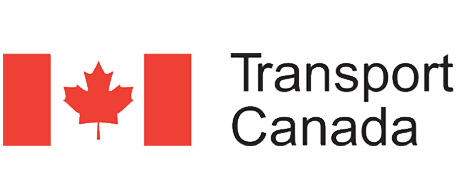RPA (Drone/UAV) Pilots

Transport Canada RPAS (Drone/UAV) Management Portal – Register your RPA (Drone/UAV), Take an online exam - Small Basic Exam, Small Advanced Exam, Flight Reviewer Exam
Canadian Aviation Regulations - RPA (Drone/UAV) pilots operating under the Small Remotely Piloted Aircraft (VLOS) – Basic Operations or Small Remotely Piloted Aircraft (VLOS) – Advanced Operations must adhere to the Canadian Aviation Regulations while operating their RPA (Drone/UAV) in Canadian Domestic Airspace.
Transport Canada Aeronautical Information Manual (TC AIM) - The TC AIM provides flight crews with a single source for information on rules and procedures for aircraft operation in Canadian airspace. It has been developed to bring together pre-flight reference information of a lasting nature into a single primary document.
Download the chapter on Remotely Piloted Aircraft (RPA) - effective March 21, 2024.
Download the Complete AIM - effective March 21, 2024.
Canada's Airspace - TP 6010 - Information on Canada's airspace classification and structure.
VFR Navigation Chart (VNC) [52 charts] - The VNC is used by VFR pilots on short to extended cross-country flights at low to medium altitudes and at low to medium airspeeds. The chart displays aeronautical information and sufficient topographic detail to facilitate air navigation through the use of a unique colour scheme, layer tinting, and shaded relief. All charts are at a scale of 1:500,000. Click here to download VFR Chart Listings.
VFR Terminal Area Chart (VTA) [7 charts] - Terminal area charts provide detailed information in congested air traffic areas. The seven charts of the series cover Toronto, Montreal, Vancouver, Winnipeg, Calgary, Edmonton and Ottawa. All charts are at a scale of 1:250,000. Click here to download VFR Chart Listings.
Canada Flight Supplement (CFS) - The CFS is a joint civil/military publication. It contains information on Canadian and North Atlantic aerodromes and is used as a reference for the planning and safe conduct of air operations. The CFS is published every 56 days and is available as a subscription sale only
Canada Water Aerodrome Supplement (CWAS) - The Canada Water Aerodrome Supplement (CWAS) is published once a year and is an official aeronautical publication suitable for air navigation purposes. The CWAS is available as a subscription sale only
Permission to fly in Controlled Airspace - If you plan to operate your RPA (Drone/UAV) in NAV Canada-controlled airspace (Classes C, D or E) you must obtain written authorization from NAV Canada prior to conducting any flight. Authorization must be obtained using NAV Drone, NAV Canada's only app that lets you safely and legally request permission to fly a drone in airspace controlled by NAV Canada. You must hold a valid Transport Canada-issued Pilot Certificate – Small Remotely Piloted Aircraft (VLOS) – Advanced Operations, and operate a RPAS/Drone/UAV registered with and certified by Transport Canada for use within controlled airspace.
RPA (Drone/UAV) Flight Site Selection Tool – This interactive map tool provides a graphical way to choose safe operating sites for drone flights. Areas that require caution are shown in yellow. Areas that require permission are shown in orange and areas where drone flights are not permitted are shown in red.
Aviation Weather and NOTAMs – Aviation weather information is available from Nav Canada's Flight Planning and Reporting web site, or one of the Flight Information Centres. To receive interpretive weather briefings as well as other advisory services, call a Flight information Centre (FIC) at
Planetary K-index – The K-index quantifies disturbances in the horizontal component of earth's magnetic field with an integer in the range 0-9 with 1 being calm and 5 or more indicating a geomagnetic storm.
Special Flight Operations Certificate (SFOC-RPAS) - If you want to fly your drone outside the rules, you will need to apply for a Special Flight Operations Certificate (SFOC).
Restricted Operator Certificate - Aeronautical (ROC-A) - Having an aeronautical radio operator certificate is not mandatory, however, a radio may be part of a pilot’s risk-mitigation efforts in the event of a non-standard operation. If you plan to operate a RPA (Drone/UAV) in or near busy airspace, a radio can be an extremely valuable source of traffic information helping the pilot to build up a mental picture of other traffic in the local area.
Recurrent Training (2023-2024) - To remain certified, every drone (RPAS/UAV) pilot holding a Pilot Certificate - Basic operations or a Pilot Certificate - Advanced operations is required to successfully complete a recurrent training activity set out in section 921.04 of Standard 921 — Small Remotely Piloted Aircraft in Visual Line-of-Sight (VLOS). This cycle follows a recurring 2 year basis.
Drone Incident Reporting Form - Complete and submit this form if you think someone is flying a drone in an irresponsible manner without a permit (for example, flying close to other aircraft, near aerodromes, or at a high altitude).
Bird/Wildlife Strike Reporting Form - Pilots are asked to report any knowledge of bird/wildlife strikes, no matter how inconsequential the event may seem. Even information about a near miss can help authorities learn more about the presence of potentially hazardous species, and the nuances of encounters between aircraft and wildlife.
Sharing the Skies - An Aviation Industry Guide to the Management of Wildlife Hazards.
Transportation of Dangerous Goods Program - The Transportation of Dangerous Goods Program, based on risks, develops safety standards and regulations, provides oversight and gives expert advice on dangerous goods incidents to promote public safety in the transportation of dangerous goods by all modes of transport in Canada.
Canadian Airports Charts - The information in the Canadian Airport Charts provides pictorial displays of Canadian airport manoeuvring areas found in the Canada Air Pilot or the military GPH 200, and may be reproduced for the sole purpose of assisting pilots during aircraft ground movement operations. Up-to-date information on flight planning procedures and airport services, including fuel, lighting and local prohibitions or procedures is found in the Canada Flight Supplement.
Designated Airspace Handbook (DAH) - The DAH is published by Nav Canada and contains information in respect of the designation of Canadian airspace.
The Canadian NOTAM Operating Procedures - As of 10 October 2019, NAV CANADA adopted the ICAO NOTAM Standards for all NOTAM. The Canadian NOTAM Operating Procedures (CNOP) is revised and published to provide information and guidance.
AIP Canada (ICAO) - AIP Canada (ICAO) is Canada's state aeronautical information publication provided by NAV Canada. The AIP Canada (ICAO) has five parts: Part 1 – General (GEN), Part 2 – Enroute (ENR), Part 3 – Aerodromes (AD), Part 4 – AIP Canada (ICAO) Supplements and Part 5 – Aeronautical Information Circulars.
Aviation Organizations

Association for Unmanned Vehicle Systems International (AUVSI)
Canadian Owners and Pilots Association
Experimental Aircraft Association (EAA)
Journal of Unmanned Vehicle Systems
Model Aeronautics Association of Canada
Recreational Aircraft Association Canada
RPA Systems (Drones/UAV) & Solution Providers

Government

RPAs (Drones/UAVs) are aircraft - which makes you a pilot. When you fly your drone, you’re sharing the skies with other drones and aircraft. Before you fly, understand the rules you must follow.
United States of America: Federal Aviation Authority (FAA)
Australia: Civil Aviation Safety Authority (CASA)
European Union: Aviation Safety Agency (EASA)
India: Directorate General of Civil Aviation (DGCA)
